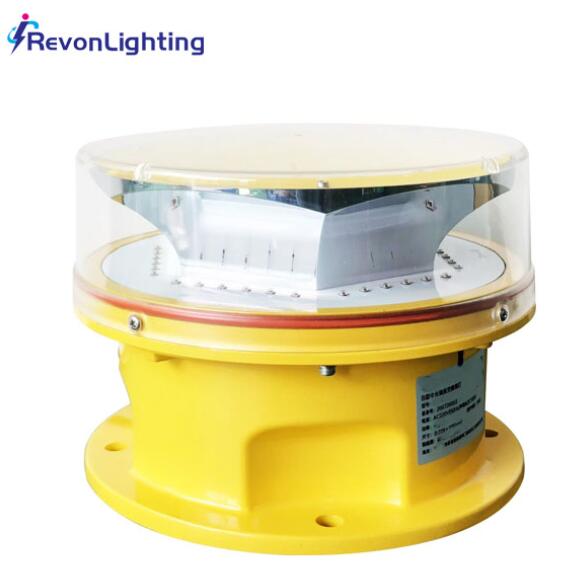Airport obstruction lights and obstruction lights at airports are critical components of aviation safety. These lights serve as visual markers to indicate the presence of obstructions that could pose hazards to aircraft during takeoff, landing, and while in the airspace around an airport. This article explores the types, functions, regulations, and technological advancements associated with airport obstruction lights and obstruction lights at airports.
Types of Airport Obstruction Lights
There are several types of airport obstruction lights used to mark different kinds of obstacles. The most common types include:
Low-Intensity Obstruction Lights: These are typically red and are used to mark obstructions that are less than 45 meters (150 feet) in height. They are usually installed on buildings, antennas, and other structures that could pose a hazard to low-flying aircraft.
Medium-Intensity Obstruction Lights: These lights can be either red or white. Red medium-intensity lights are used for night-time marking, while white medium-intensity lights are used for daytime marking. They are installed on structures that range from 45 meters to 150 meters (150 to 500 feet) in height.
High-Intensity Obstruction Lights: These are white lights used to mark structures that are over 150 meters (500 feet) in height. They are highly visible from a distance and are essential for ensuring the safety of aircraft flying at higher altitudes.
Dual Lighting Systems: These systems use a combination of red and white lights to ensure visibility during both day and night. They automatically switch between the two based on ambient light conditions.
Functions of Airport Obstruction Lights
The primary function of airport obstruction lights and obstruction lights at airports is to prevent collisions between aircraft and obstacles. These lights serve several specific purposes:

Visual Warning: They provide a clear visual warning to pilots, helping them to avoid potential hazards. This is especially important during low-visibility conditions such as fog, rain, or night-time operations.
Altitude Awareness: Obstruction lights help pilots gauge their altitude relative to the ground and surrounding structures. This is crucial for maintaining safe flight paths and avoiding controlled flight into terrain (CFIT) incidents.
Navigation Aid: They assist pilots in navigating through complex airspace around airports, particularly in areas with a high density of tall structures.
| airport obstruction lights | obstruction lights airport |
| 12 | 34 |
Regulatory Compliance: Obstruction lights ensure compliance with international and national aviation regulations. Authorities such as the International Civil Aviation Organization (ICAO) and the Federal Aviation Administration (FAA) mandate the use of obstruction lights to enhance aviation safety.
Regulations Governing Airport Obstruction Lights
The installation and maintenance of airport obstruction lights and obstruction lights at airports are governed by stringent regulations. These regulations are designed to standardize the use of these lights and ensure their effectiveness. Key regulatory bodies and their guidelines include:
International Civil Aviation Organization (ICAO): ICAO sets global standards for the marking and lighting of obstacles to ensure uniformity and safety in international airspace. ICAO Annex 14 outlines the specifications for obstruction lights, including their color, intensity, and placement.
Federal Aviation Administration (FAA): In the United States, the FAA provides detailed guidelines for obstruction lighting in Advisory Circular 70/7460-1L. These guidelines cover various aspects such as the types of lights to be used, their intensity, and their maintenance requirements.
European Union Aviation Safety Agency (EASA): EASA regulates aviation safety within the European Union and follows ICAO standards while also implementing additional region-specific requirements.
Civil Aviation Authorities (CAA): Individual countries have their civil aviation authorities that implement and enforce regulations based on ICAO guidelines and local needs.
Technological Advancements in Airport Obstruction Lights
Technological advancements have significantly improved the effectiveness and reliability of airport obstruction lights and obstruction lights at airports. Some notable advancements include:
LED Lighting: LED technology has revolutionized obstruction lighting by providing brighter, more energy-efficient, and longer-lasting lights. LEDs also offer better performance in extreme weather conditions compared to traditional incandescent or halogen lights.
Smart Lighting Systems: Modern obstruction lights can be integrated into smart systems that allow for remote monitoring and control. These systems can automatically adjust the intensity of the lights based on ambient light conditions, reducing energy consumption and ensuring optimal visibility.
Solar-Powered Lights: Solar-powered obstruction lights are becoming increasingly popular due to their sustainability and cost-effectiveness. They are particularly useful in remote locations where access to electrical power is limited.
GPS-Based Synchronization: Advanced obstruction lighting systems can use GPS technology to synchronize the flashing patterns of lights on multiple structures. This enhances their visibility and helps pilots better identify and avoid obstacles.
Conclusion
Airport obstruction lights and obstruction lights at airports play a crucial role in maintaining aviation safety by providing visual warnings to pilots and helping them navigate through potentially hazardous areas. The different types of obstruction lights cater to various needs based on the height and nature of the obstacles. Strict regulations ensure their proper installation and maintenance, while technological advancements continue to improve their effectiveness and efficiency. As aviation technology evolves, so too will the systems designed to keep our skies safe, ensuring that airport obstruction lights remain a vital component of air travel safety.